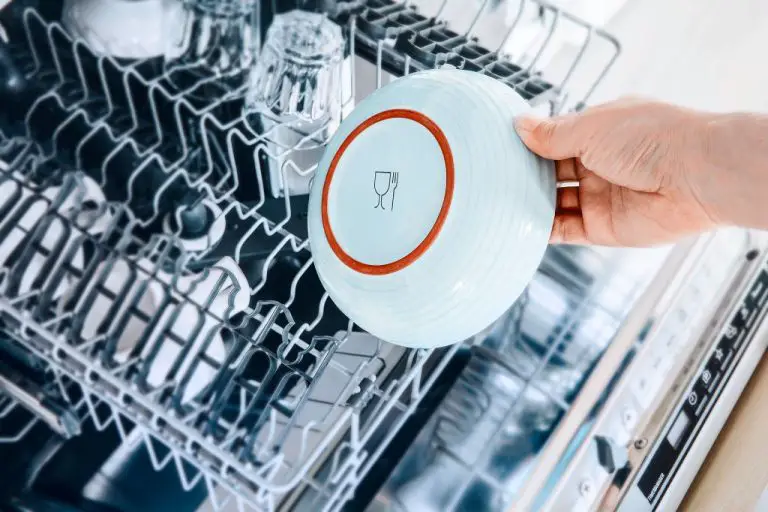What Is In Modeling Clay?
Modeling clay is a type of plasticine or clay that is primarily used for sculpting, mold making, animation, and educational purposes. Unlike regular clay that hardens when it dries, modeling clay retains its malleable and “doughy” consistency. This makes it ideal for shaping, molding, and sculpting detailed objects and figures. Some key features of modeling clay include:
- It can be shaped into 3D objects and sculptures
- It retains finer detail than regular clay
- It doesn’t dry out or harden
- It can be reused and reworked multiple times
There are several main types of modeling clay:
- Oil-based – Made from substances like petroleum jelly, lanolin, and mineral oils. Brands include Plastalina and Roma Plastalina.
- Polymer – Made from PVC, this clay doesn’t harden and provides vibrant colors. Brands include Fimo and Sculpey.
- Natural – Made from natural substances like beeswax, starches, and tree resins. Brands include Modello and Naturaline.
This article will provide an in-depth look at what’s inside modeling clay, including the key ingredients and materials that give it its unique properties.
The History of Modeling Clay
Modeling clay has been used for artistic expression and creative play since ancient times. Evidence of clay animal figures and small clay pots and tools shaped by hand date back over 30,000 years to the Paleolithic period. In ancient Egypt, Greece, Rome, China, and India, figures shaped from clay were used in rituals and ceremonies. As early as 200 AD, Greek and Roman children played with clay animal toys and figures.
In the late 1800s, modeling clay started to be manufactured commercially. One key innovation was the invention of non-drying, reusable modeling clay in the 1930s. This allowed clay to be used repeatedly without drying out. In the 1950s, manufacturers created modeling clay in bright primary colors, sparking a modeling clay craze. New modeling compounds were invented to meet the demand, including clays that air-dry into permanent sculptures.
Today modeling clay remains a popular artistic medium and children’s toy around the world. Both manufacturers and consumers continue to develop new modeling clay products, accessories, and techniques.
Base Materials
The primary base materials in modeling clay include clay, oils, waxes, and binders. These ingredients provide essential qualities like moldability, texture, and durability.
Clay forms the bulk of modeling clay. The most common types used are kaolin and calcium carbonate clays. Kaolin clay is very fine and gives modeling clay plasticity and smoothness. Calcium carbonate clays like talc are also finely milled and help make the clay more durable.
Oils and waxes are added to modeling clay to give it a softer, flexible texture. Common oils used include mineral oil, castor oil, and lemon oil. Waxes like paraffin, beeswax, and carnauba wax help modeling clay become more pliable and not dry out.
Binders act like glue to hold the clay and other ingredients together. Cellulose derivatives like methylcellulose and carboxymethyl cellulose are typical binders in modeling clay. Starches may also be used.
Pigments and Colorants
Modeling clay derives much of its color from added pigments and dyes. Pigments are finely ground colored particles that provide opacity and coloring. Common pigments used in modeling clay include:
- Iron oxides – Provide earth tones like yellow, red, brown
- Titanium dioxide – Adds brightness and whiteness
- Carbon black – Contributes deep black color
- Ultramarine blue – Creates a bright blue tone
Dyes are used to produce transparent colors by dissolving in the clay mixture. Some examples of dyes used in modeling clays include:
- Azo dyes – Create a range of vivid colors
- Anthraquinone dyes – Provide blues and greens
- Triphenylmethane dyes – Give bright, intense colors
The specific pigments and dyes used, and in what proportions, determine the final color and appearance of the modeling clay. Most modeling clays come in a rainbow of premixed colors for convenience and consistent results.
Plasticizers
Plasticizers are an important component of modeling clay that help increase its plasticity and workability. The most common plasticizers used in clays are oils, waxes, and glycerin.
Oils such as mineral oil, coconut oil, and silicones act as lubricants within the clay mixture. They allow the clay particles to slide over one another more easily, improving its ability to be molded and shaped without cracking or breaking apart. Oils help modeling clay remain smooth, flexible, and workable.
Waxes such as paraffin, beeswax, and carnauba wax also increase the plasticity of clay. They bind to the clay particles and lower the hardness and rigidity of the material. This makes the clay easier to manipulate and form into detailed shapes and figures.
Glycerin is a popular plasticizer derived from vegetable oils. It is a thick, odorless, and colorless liquid that is water-soluble. The hygroscopic nature of glycerin enables it to absorb ambient moisture in the air. This helps keep modeling clay from drying out too quickly.
The combination of different oils, waxes, and glycerin in varying amounts gives modeling clay its unique plasticity and workability for shaping and sculpting detailed objects.
Preservatives
Preservatives are added to modeling clay to prevent mold and bacterial growth. Since modeling clay contains water and organic materials like starch, it can be prone to developing mold if left unused for long periods of time. Preservatives help extend the shelf life and usability of modeling clay.
The most common preservative used in modeling clay is potassium sorbate. This is a food-grade preservative that inhibits mold and bacteria. It is considered very safe and is even used as a preservative in foods like cheese and yogurt. The amount of potassium sorbate used in modeling clay is tiny, in the range of 0.1% of the total material.
Other preservatives sometimes used include sodium benzoate, methylparaben, and propylparaben. These all work to prevent microbial growth by interfering with their metabolic processes. The specific preservatives and amounts used will depend on the modeling clay manufacturer and their formulation.
Thanks to the addition of effective preservatives, modeling clay can resist mold and bacterial growth. This allows the clay to be stored for extended periods and reused multiple times without spoiling. Preservatives are a key reason modeling clay remains soft and usable after being opened, rather than hardening and becoming unusable.
Scenting
Modeling clay manufacturers often add scents to make the clay more enjoyable to use. The most common way to add scent is through fragrance oils, also known as aromatic additives. Fragrance oils are synthetic oil-based scents that are mixed directly into the clay.
Popular fragrance oils used in modeling clays include fruit scents like strawberry, lemon, and orange, as well as vanilla, cocoa, and floral scents like rose and lavender. The fragrance oils are diluted and added in small quantities, usually making up less than 1% of the clay’s total composition. The scent intensity can vary from quite subtle to more pronounced.
Some modeling clay brands pride themselves on offering clays in a wide variety of scents to appeal to different preferences. Scented clays are especially popular with younger users. However, unscented varieties are also available for those who prefer the natural clay smell or are sensitive to fragrances.
Texturizers
Texturizers are additives that modify the texture of modeling clay. They help give the clay a smooth, silky or gritty feel. Common texturizers include:
– Fine silica powder: Adds a silky smoothness to the clay.
– Calcium carbonate: Contributes a fine, sandy texture.
– Microcrystalline wax: Makes the clay more flexible.
– Kaolin clay: Creates a smooth, velvety feel.
– Talc: Reduces stickiness and makes the clay easier to handle.
Texturizers are important for achieving the right consistency and feel for different modeling techniques. A smooth clay is good for sculpting fine details, while one with more grip allows shaping rougher forms. The proportions of texturizers can be adjusted to create customized textures.
Specialized Modeling Clays
While the basic ingredients of modeling clay are relatively standard, specialized clays have been developed for particular uses and properties. Some of the most popular types include:
Polymer Clay
Polymer clay contains PVC, plasticizers, and pigments. It air-dries to a permanent, hard finish that can be sanded, drilled, and painted once cured. Polymer clays require baking at relatively low temperatures to set the plasticizers. They are available in a wide range of colors and effects.
Air-Dry Clay
Air-dry clays are made from natural materials like cellulose fibers combined with potato starch or glue. They dry naturally into a hard finish within 24 hours and do not require baking. Air-dry clays are non-toxic and lightweight. They can crack if dried too quickly.
Kinetic Sand
Kinetic sand combines sand with a silicone binder that causes it to remain together when molded. It provides a soft, dry, crumbly texture that retains shape. Kinetic sand flows through fingers but does not stick to surfaces. It’s popular for sensory play and molding detailed shapes.
Uses of Modeling Clay
Modeling clay has many popular uses, especially in the areas of art, crafts, therapy, education, and toys. Its malleable and reusable nature makes it an ideal medium for unleashing creativity.
In art, modeling clay enables sculptors to craft original works in 3D. It can hold fine detail when needed. Many sculptures start as small clay models before being reproduced on a larger scale. Modeling clay is also frequently used by crafters and hobbyists to handmake decorative items like bowls, beads, figurines and more. The finished pieces can be baked in a conventional oven to harden them.
As a therapy tool, molding clay helps improve motor skills and dexterity. It provides stress relief and relaxation too. Clay therapy is used by occupational therapists for a wide range of patients. In education, clay allows hands-on learning in art classes starting at a young age. Students can easily shape clay into objects they are studying in science and history as well.
Clay is also a classic toy material that fosters imagination and entertainment. Preschoolers enjoy molding clay figures and objects. For kids, it develops eye-hand coordination and creativity. Branded modeling clay products are popular toys.



